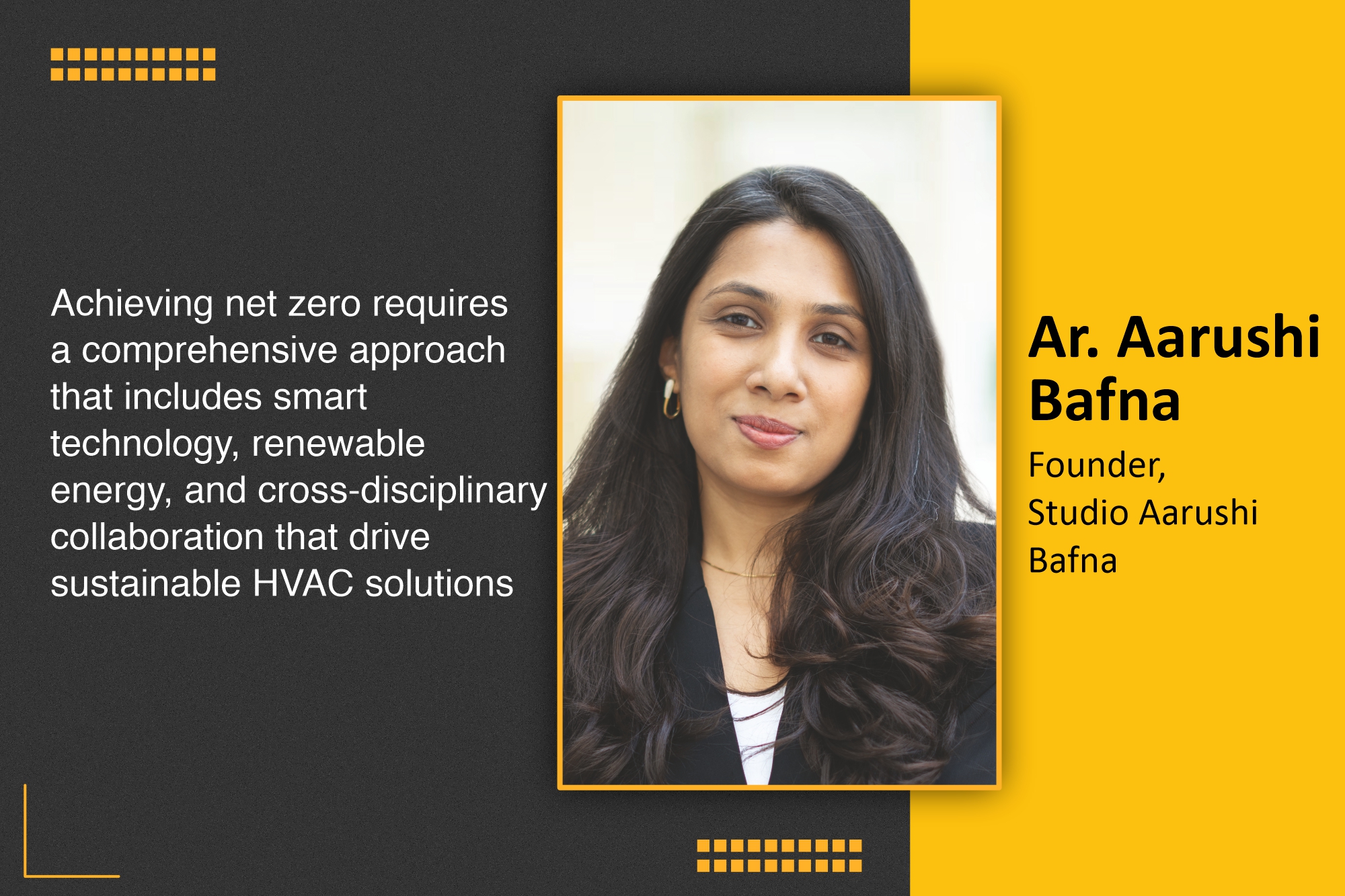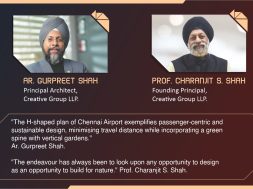A collaborative approach to energy-efficient HVAC systems

In this discussion, Ar. Aarushi discusses the challenges of transitioning to energy-efficient HVAC systems and how the transition can be achieved through a collaborative, tech-driven approach.
What are the challenges associated with transitioning to high-performance, sustainable HVAC systems?
The transition to high-performance, sustainable HVAC systems presents various problems. First, high upfront costs are a barrier, as advanced systems necessitate a significant initial investment despite long-term savings. Second, interoperability with current infrastructure can be challenging, especially in older buildings not equipped for modern HVAC equipment. Third, design complexity increases when integrating energy-efficient technologies like heat pumps, geothermal systems, or district heating into new or retrofitted spaces. Fourth, a scarcity of skilled workers educated in cutting-edge HVAC solutions may hinder adoption.
Furthermore, regulatory and compliance requirements differ by region, making standardisation difficult. Lastly, behavioural and operational challenges arise when users or facility managers are unfamiliar with optimising smart HVAC systems, leading to inefficient usage. Overcoming these obstacles involves financial incentives, policy assistance, cross-disciplinary collaboration, and widespread education on sustainable HVAC technologies.
How important is the collaboration across stakeholders—architects, structural engineers, HVAC experts, and building managers—in the design of energy-efficient HVAC systems?
To design energy-efficient HVAC systems, stakeholders must work together. Architects must align spatial layouts and insulation strategies with HVAC needs, ensuring optimal airflow and thermal efficiency. Structural engineers play a role in load calculations, accounting for the weight of HVAC units and thermal mass considerations. HVAC experts bring technical expertise in system selection, ductwork design, and efficiency optimisation. Building managers guarantee practical usability, maintenance feasibility, and long-term performance tracking. When these stakeholders work together early in the design phase, incorporating passive cooling, renewable energy sources, and smart controls becomes easier, lowering energy consumption, emissions, and operating costs while increasing occupant comfort and indoor air quality.
Can you walk us through the best practices for carbon-neutral manufacturing processes to achieve net zero?
To achieve net zero in manufacturing, a multifaceted approach is required. First, firms must prioritise renewable energy sources such as solar, wind, and hydro to power their operations. Second, energy-efficient technologies like heat recovery systems, enhanced automation, and lean manufacturing, which reduce waste, must be adopted. Third, sustainable resources, such as recycled or bio-based raw materials, must be adopted to help reduce embedded carbon. Fourth, embracing carbon capture technologies offsets emissions from inevitable industrial operations. Fifth, a change to closed-loop production can ensure the reuse of waste resources rather than destruction. Finally, supply chain decarbonisation—collaborating with low-carbon suppliers and optimising logistics to reduce fuel consumption—is critical. Regular carbon footprint assessments and adherence to global green standards help to improve sustainability norms.
How can integrating smart technologies help in achieving net zero?
Innovative technologies play a revolutionary role in the transition to net zero. IoT-enabled sensors track real-time energy consumption, optimising HVAC, lighting, and equipment utilisation. AI-powered predictive maintenance reduces inefficiencies by spotting problems before they worsen. Automated demand response systems change energy loads dynamically based on peak and off-peak hours, decreasing grid pressure. Digital twins simulate energy flows to identify inefficiencies in building systems before they are implemented in the real world. Further, smart grids and AI-based energy distribution facilitate renewable integration, resulting in a steady and sustainable power supply. Combining these technologies can help organisations reduce emissions, cut expenses, and migrate towards carbon neutrality more effectively.
For more information, visit: https://www.studioaarushibafna.com/
Cookie Consent
We use cookies to personalize your experience. By continuing to visit this website you agree to our Terms & Conditions, Privacy Policy and Cookie Policy.










